Keep your garden thriving by watching out for these common invasive pests
July 27, 2020
Don't lose your fruits, vegetables or herbs this summer to the invasive species that might be creeping around your garden. Below are a few prioritized species on our research list to watch out for in your own backyard.
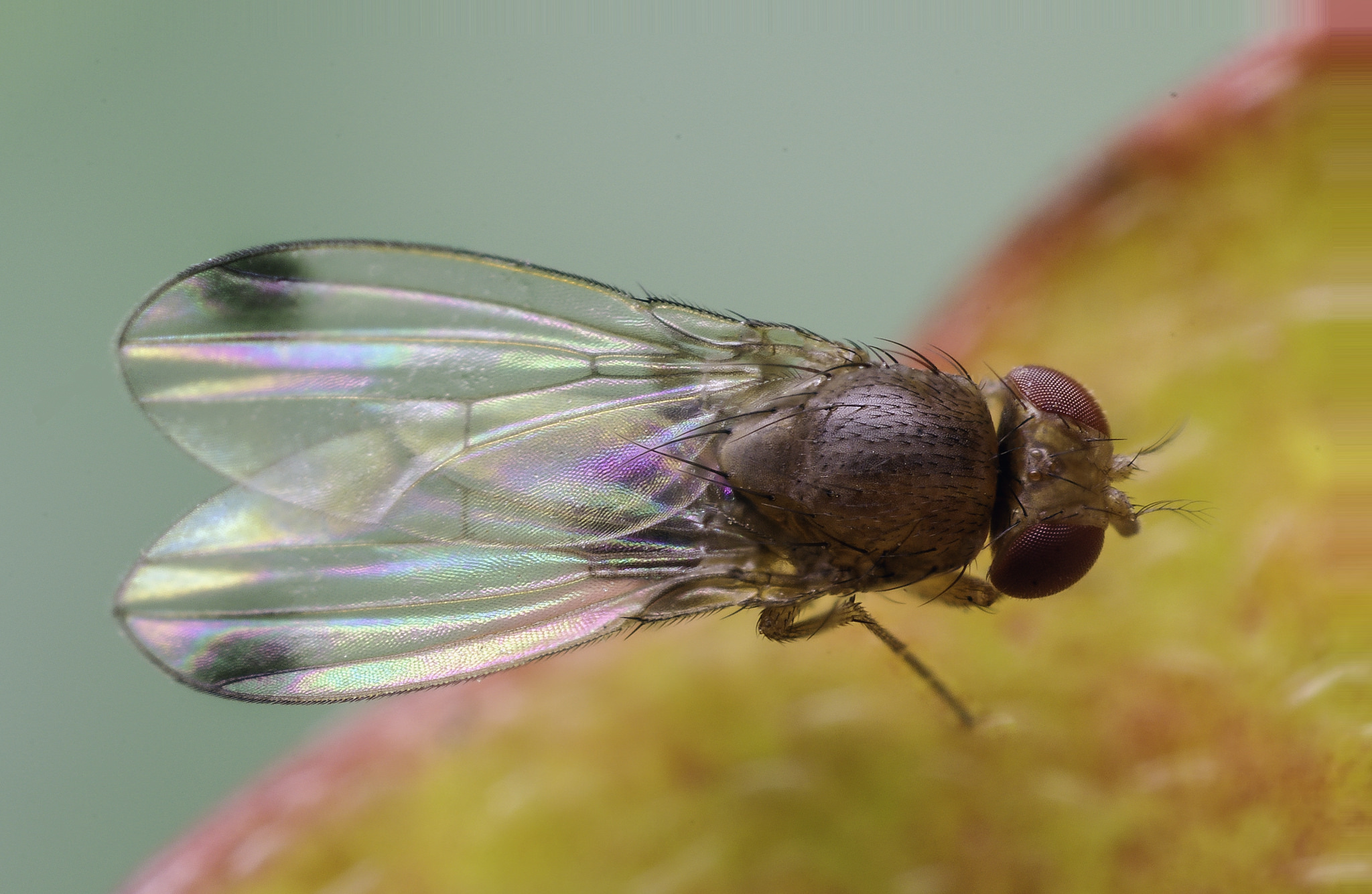
Spotted wing drosophila (SWD)
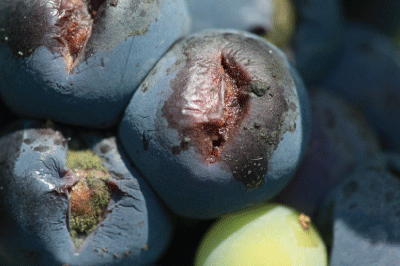
Wine grapes damaged by SWD infestation
1. Spotted wing drosophila (SWD)
If you grow fruits in your garden, the spotted wing drosophila (Drosophila suzukii; SWD) could cause trouble. Reported in 34 Minnesota counties so far, SWD targets strawberries, blueberries, raspberries and other soft-skinned fruits.
If you're on Tiktok, you may have spotted the recent trend showing tiny bugs emerging out of strawberries that have been soaked in salt water. These bugs? Yup—they’re SWD! (Don't worry...it's harmless to eat them, though we understand why you wouldn't want to!)
Management techniques for SWD have been largely limited to the use of organic or conventional insecticides. However, two of our research groups have been working to expand control options for local organic growers. Researchers in Mary Rogers’ lab aim to better understand the efficacy of organic chemical controls and physical exclusion on SWD in raspberries. They have tested everything from sugar substitutes to spider venom, along with physical barriers involving netting and cages. They found that the common organic pesticide spinosad remains one of the most effective chemical control SWD options for organic raspberry systems.
Another MITPPC-funded group led by Michael Smanski is working towards genetic control of SWD by interfering with the insect's ability to reproduce. If successful, this technology could also lead to the successful control of other pests. The team’s long-term goal is a EPA/USDA-approved field trial.
Tips for managing SWD in your home garden
2. Japanese beetle
Infamous in at least the 21 southern Minnesota counties where it has been reported, the Japanese beetle (Popillia japonica) adults and larvae target everything from crabapple trees to roses to turfgrass. Though Japanese beetle feeding damage usually affects only the appearance of a plant, most gardeners hate to see all ornamental plant leaves in their backyard looking like lacework.
The beetles are said to cost $460 million per year to control. Current management techniques include chemical control, biological control, or – for many frustrated home gardeners – simply removing them by hand. The Japanese beetle is extremely attracted to prematurely ripening or diseased fruit, so removing this fruit from your trees or the ground can help to prevent the beetle from finding your trees. As of 2020, this invasive species has been added to our research priority list for future projects.
Tips for managing Japanese beetles in your lawn and garden
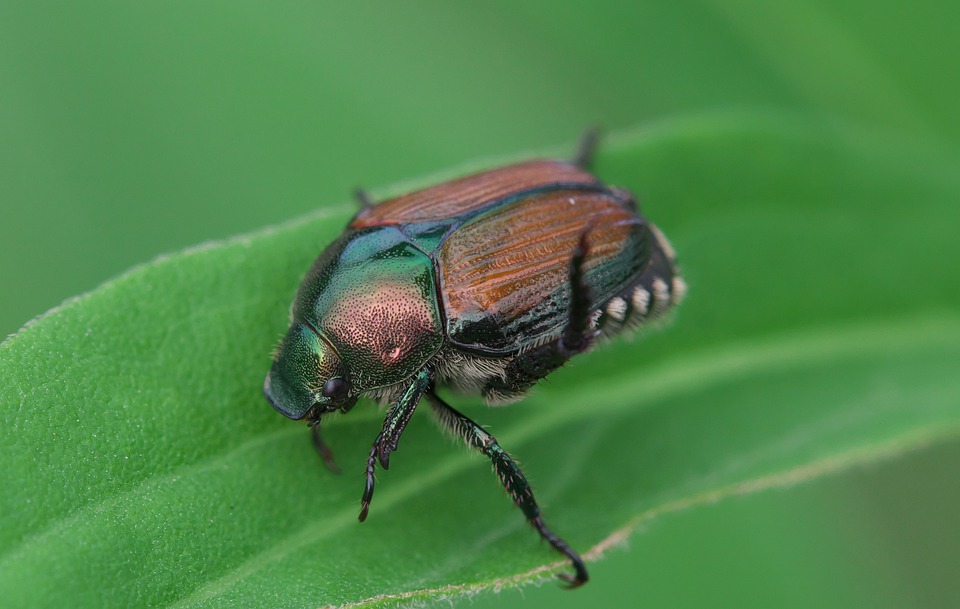
Adult Japanese beetle
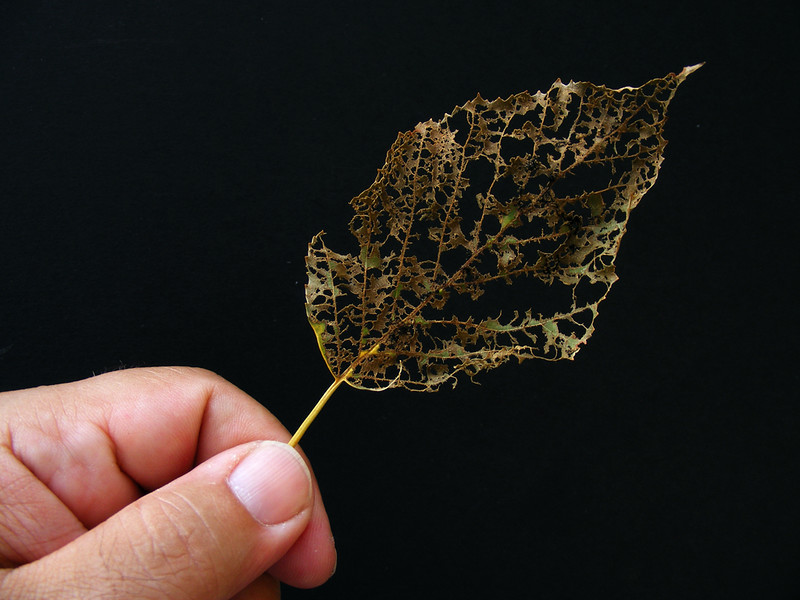
Leaf damage caused by adult Japanese beetle feeding
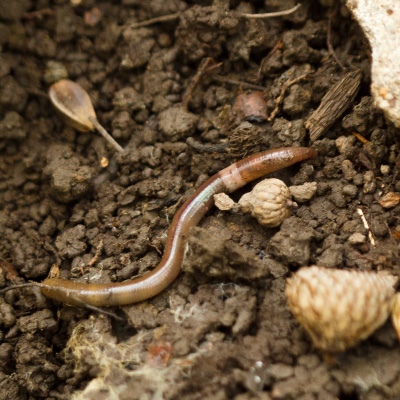
Invasive jumping worm
3. Jumping earthworms
The jumping earthworm (Amythas spp.) – known for its leaping movement – lives and feeds in the upper leaf litter layer of soil. This can dramatically damage the soil’s quality and nutrient content. Even though only eight Minnesota counties have reported the presence of jumping earthworms, their spread could trigger erosion, threaten plant growth and decrease soil community biodiversity. If jumping earthworms are infesting your garden’s soil, vegetables, herbs and ornamentals might not be able to thrive there.
An MITPPC project is seeking the help of citizen scientists in the Duluth, Rochester and Twin Cities areas to learn more about how jumping earthworms are spreading and how they might be controlled. The team is asking gardeners and home owners to report all sightings of jumping worms through an easy Google form.
With the information collected, our interdisciplinary research team will create a Best Management Practices guide for jumping earthworm infestations in Minnesota.
Tips for monitoring for invasive jumping worms in your garden
Soil sampling methods for home gardeners
4. Brown marmorated stink bug (BMSB)
Already prolific on the east coast, the invasive brown marmorated stink bug (Halyomorpha halys, BMSB) has only been reported in 25 Minnesota counties to date. The insect poses serious threat to important regional crops like corn, soybean, apple, grape and others. It can also become a household pest, sheltering indoors in large numbers similar to the Asian lady beetle. Researchers don’t know a lot about how BMSB is spreading across the state, so two MITPPC-funded research groups are taking a closer look.
The first project led by Senait Senay involves a computer simulation model that could help outline future movement patterns of the brown marmorated stink bug to a very precise degree. Her team's work also explores which of Minnesota’s resources would be most at risk, economically, in the case of a BMSB invasion.
A second BMSB project, led by the Hutchison lab, has focused on determining the insect's lifespan and reproductive ability in Minnesota climate. The team has discovered that population growth is very likely to occur at the northern edge of their range in the Midwest, where climate conditions are favorable to BMSB. Another major outcome of the group's is the Midwest Stink Bug Assistant app, which was built to help users identify and report the pest. Consistent early detection will help to slow BMSB spread and contribute to potential management solutions.
Tips for monitoring and reporting BMSB at home
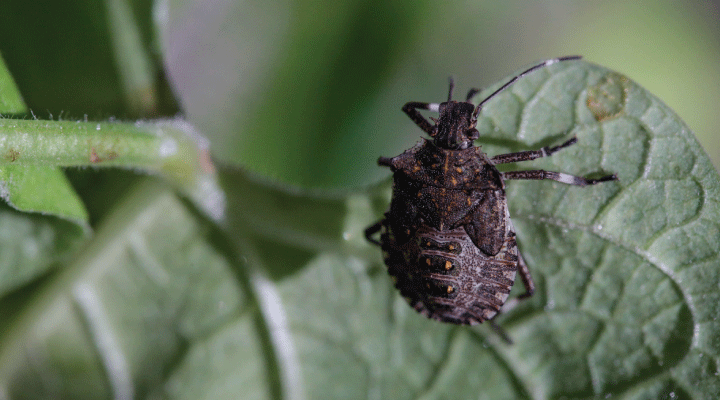
Adult brown marmorated stink bug (BMSB) on a soybean leaf
About the Author
Maggie Nesbit is a Communications Intern with the Minnesota Invasive Terrestrial Plants and Pests Center (MITPPC). She is a double major in English and Strategic Communications at the University of Minnesota. In her spare time, Maggie enjoys running, hiking, reading and spending time with friends and family.
